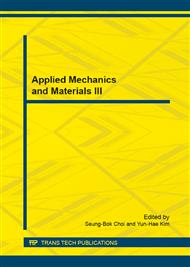p.377
p.382
p.387
p.395
p.400
p.406
p.410
p.419
p.422
Ceramsite Foam Concrete Insulation Block
Abstract:
This paper studied the lightweight ceramsite, thickener and waterproofing agent dosage on the influence of the foam concrete water absorption and strength, and further researched into the amount of foaming agent on the influence of the density and strength. The results show that adding 20% ceramic, 0.03% thickening agent and 1% waterproof agent prepared the best performance of foam concrete.
Info:
Periodical:
Pages:
400-405
Citation:
Online since:
January 2015
Authors:
Keywords:
Price:
Сopyright:
© 2015 Trans Tech Publications Ltd. All Rights Reserved
Share:
Citation:


